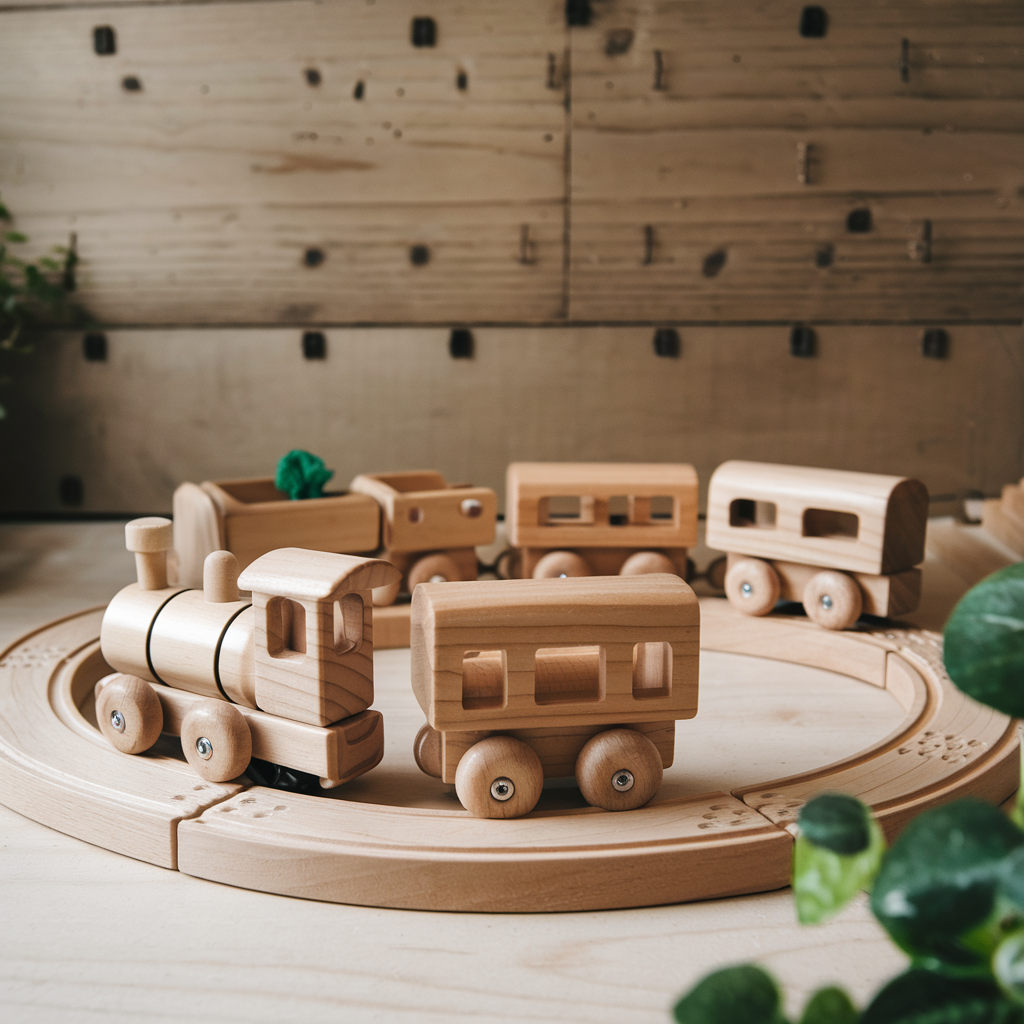Choosing wooden toys for children is a great way to invest in durable, safe, and aesthetically pleasing items. However, if we want to ensure a positive environmental impact, it’s essential to consider toys made from sustainable materials. Opting for these products can help protect the environment by promoting responsible manufacturing practices and the use of renewable natural resources. Here are some practical tips for selecting truly sustainable wooden toys.

1. Check the Source of the Wood
The first step in choosing wooden toys made from sustainable materials is verifying the origin of the wood used. Look for toys certified by the FSC (Forest Stewardship Council) or PEFC (Programme for the Endorsement of Forest Certification), organizations that ensure the wood comes from responsibly managed forests. These certifications indicate that the wood was harvested with minimal environmental impact, supporting ecosystem preservation.
Important Tip:
- Always look for seals or product information regarding certification on the toy’s packaging or description.
2. Choose Natural, Non-Toxic Finishes
To ensure the toy is safe and sustainable, opt for products with natural, non-toxic finishes. Wooden toys made with sustainable materials often use vegetable oils, beeswax, or water-based paints, free from harmful chemicals that can negatively impact the environment and children. These natural finishes help maintain the toy’s beauty and do not release toxic compounds when handled.
Safety Tip:
- Avoid toys that use synthetic paints or solvent-based finishes, as they may release harmful fumes.
3. Look for Brands Committed to Sustainability
Some brands are dedicated to making products that respect the environment and are transparent about their processes. When choosing wooden toys made from sustainable materials, research brands that practice ethical production, like using renewable energy, recycling waste, and small-scale production to minimize environmental impact. Brands committed to sustainability often highlight this on their website and in product descriptions.
Suggestion:
- Prioritize companies that use eco-friendly packaging and have recycling or reusing policies for materials.
4. Opt for Rapidly Renewable Woods
Not all woods used in toys regenerate at the same rate. Wood from trees like bamboo, for instance, grows quickly and is considered a highly renewable resource. When choosing wooden toys made from sustainable materials, check whether the wood comes from fast-growing trees with minimal environmental impact. These options are excellent for conscious and responsible consumption.
Bamboo Benefit:
- Besides being a durable, fast-growing wood, bamboo is naturally pest-resistant, reducing the need for pesticides.
5. Avoid Toys with Plastic Parts
Although some wooden toys may include small plastic components, truly sustainable wooden toys avoid or minimize plastic use in their design. By opting for toys made entirely of wood, you’re contributing to reducing plastic use, which takes centuries to decompose. Look for toys that use only wood and other sustainable materials, like natural fiber ropes or organic cotton fabrics.
Practical Tip:
- Read product descriptions carefully to ensure the toy is made solely of natural and biodegradable materials.
6. Choose Durable, Long-Lasting Toys
Durability is a key characteristic of a sustainable toy. Well-made and sturdy wooden toys can be passed down through generations, reducing the need for new toys and, consequently, environmental impact. When choosing wooden toys made from sustainable materials, prioritize those designed to last, avoiding fragile options that easily break.
Durability Tip:
- Check if the toy has a quality finish and strong structure, as durable toys provide years of enjoyment.
Conclusion
Choosing wooden toys made from sustainable materials is an excellent way to invest in children’s development while contributing to environmental preservation. By considering the wood’s origin, natural finishes, and the brand’s sustainability practices, you can make more mindful choices and help create a better world for future generations.
